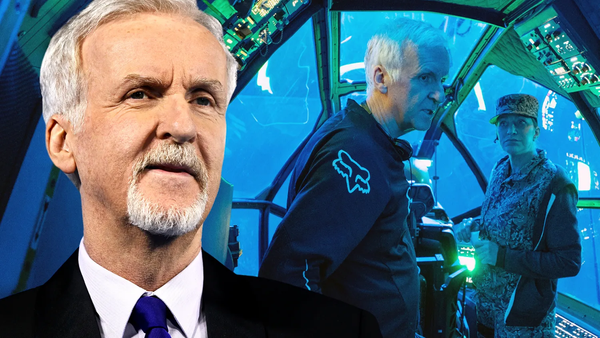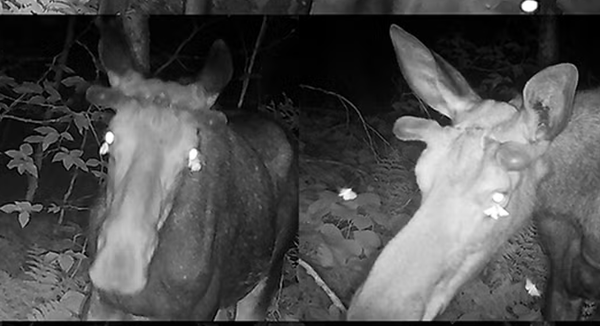She’s one of Florida’s most lethal python hunters
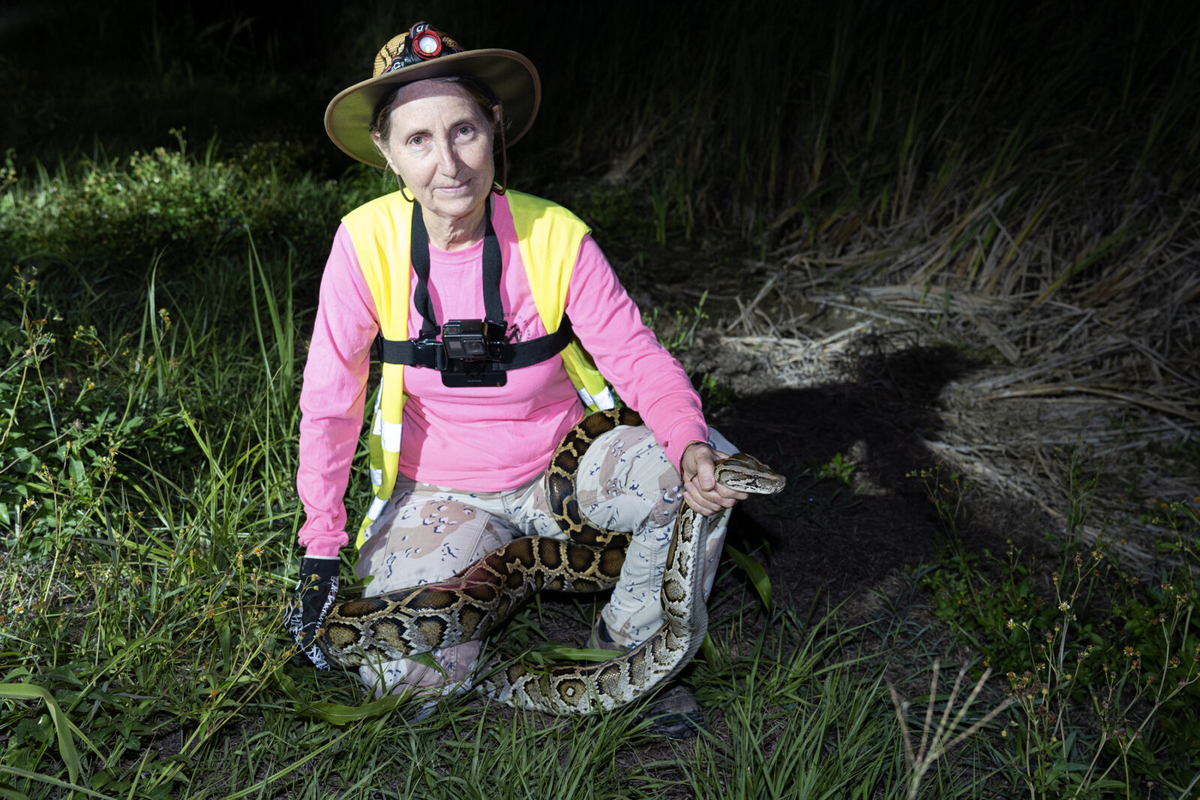
From Garden & Gun: "It is nearing midnight on an unpaved road bordering the Florida Everglades when Donna Kalil slams on the brakes. Light from her blue F-150 floods the scene along the road, where, within the grass, a sheen of iridescent skin glints, and the sinuous shape and inkblot pattern of a Burmese python leap into focus. Kalil jumps from the truck, long braid swinging, and moves in on her quarry. At sixty-two years old, Kalil is a full-time, year-round professional python hunter, and the original python huntress: She is the first woman to hold this job, not that gender crosses anyone’s mind out here in the living, breathing wilderness of the Everglades. Kalil positions herself between the python and the endless black reach of swamp beyond it. Then she pounces, angling for a strong grip just behind the head. This brief fight represents the 876th time Kalil has pitted herself against a Burmese python and won."
He cracked a 30-year-old encrypted file that helped end apartheid in South Africa

From Wired: "John Graham-Cumming's day job is the CTO of the security giant Cloudflare, but he is also a historian of technology. He might be best known for leading a campaign to force the UK government to apologize to the legendary computer scientist Alan Turing for prosecuting him for homosexuality and harassing him to death. The story he shared centers around Tim Jenkin, a former anti-apartheid activist. It was the early 1980s, and the ANC’s efforts were flagging. The problem was communications. Using a Toshiba T1000 PC running an early version of MS-DOS, Jenkin wrote a system using the most secure form of crypto, a one-time pad, which scrambles messages character by character using a shared key. When Jenkin returned to South Africa in 1992, he took his tools with him — but then years later, he had forgotten the password."
If you ordered Pizza Number 40 at this German restaurant it came with a side order of cocaine
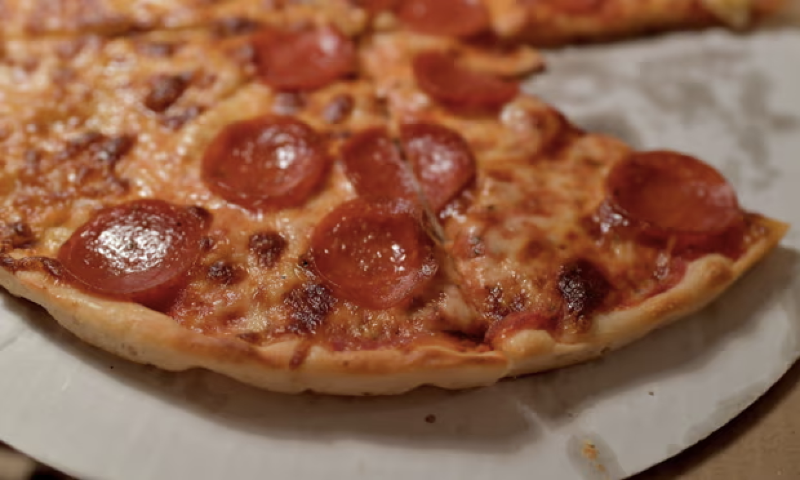
From The Guardian: "Pizza No 40 was long one of the best-selling dishes at a restaurant in the German city of Düsseldorf, until police discovered the secret ingredient: a side of cocaine. Authorities say uncovering the illicit narcotics delivery scheme allowed them to smash an organised crime ring in Germany’s most populous state, North Rhine-Westphalia. About 150 officers, including from elite units, last week searched 16 properties in nine cities, arrested three suspects and seized caches of weapons, the news agency DPA reported. Ch Insp Michael Graf von Moltke said police had had the pizzeria, in a popular party district of the city, in their sights since March, when a routine food inspection uncovered the drug in the kitchen. Narcotics investigators put the business under surveillance and noticed that Pizza No 40 was a customer favourite."
Lost Silk Road cities discovered high in the mountains of Central Asia

From Scientific American: "Hidden in the towering mountains of Central Asia, along what has been called the Silk Road, archaeologists are uncovering two medieval cities that may have bustled with inhabitants a thousand years ago. A team first noticed one of the lost cities in 2011 while hiking the grassy mountains of eastern Uzbekistan in search of untold history. The archaeologists trekked along the riverbed and spotted burial sites along the way to the top of one of the mountains. Once there, a plateau dotted with strange mounds spread before them. The ground, too, was littered with thousands of pottery shards. “We were kind of blown away,” says Michael Frachetti, an archaeologist at Washington University in St. Louis. He never expected to find a 30-acre medieval city in a relatively inhospitable climate around 7,000 feet above sea level."
This Italian detective investigates centuries-old paintings for clues about ancient produce
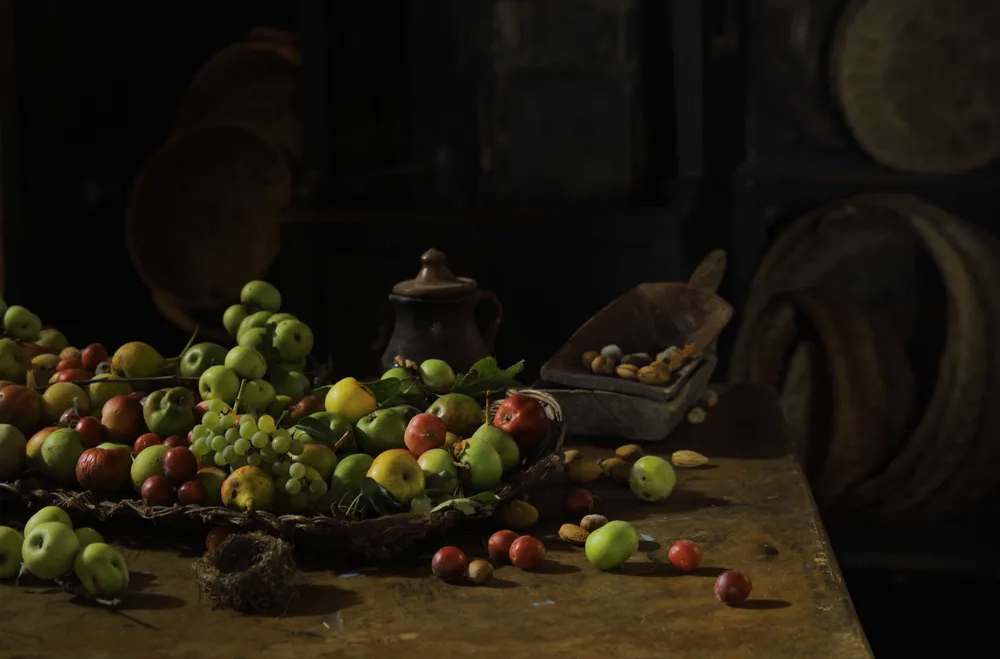
From the Smithsonian: "When Isabella Dalla Ragione assesses a Renaissance painting, she doesn’t immediately notice the brushstrokes or the magnificence of the imagery. The first thing she notices is the fruit. We breeze through room after room, passing a blur of masterworks by the likes of Gentile da Fabriano and Benozzo Gozzoli, until Dalla Ragione stops before a radiant painting that fills an entire room of its own. The arresting work is by Piero della Francesca, an artistic giant of the 15th century. It shows the Madonna, wrapped in a deep blue robe, cradling a towheaded baby Jesus. But Dalla Ragione points me to what looks like a small bunch of translucent marbles in Jesus’s tiny hand: cherries! They’re pale red with a white tint—acquaiola cherries, a variety that has almost disappeared in Italy. Their juice was seen as symbolic of Christ’s blood."
Cate Blanchett really really hates leaf blowers
pic.twitter.com/VREGVPEEog https://t.co/Om21wM1xHB
— nate 🥥🌴 (@ndkckbsn) October 23, 2024
Acknowledgements: I find a lot of these links myself, but I also get some from other newsletters that I rely on as "serendipity engines," such as The Morning News from Rosecrans Baldwin and Andrew Womack, Jodi Ettenberg's Curious About Everything, Dan Lewis's Now I Know, Robert Cottrell and Caroline Crampton's The Browser, Clive Thompson's Linkfest, Noah Brier and Colin Nagy's Why Is This Interesting, Maria Popova's The Marginalian, Sheehan Quirke AKA The Cultural Tutor, the Smithsonian magazine, and JSTOR Daily. If you come across something interesting that you think should be included here, please feel free to email me at mathew @ mathewingram dot com
